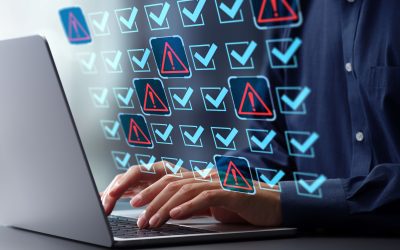Shopping for a new computer can be a headache if you don’t know what you’re looking for. Check out our practical guide to setting you on the right track:
1. Workload Matters
First things first, think about what you actually need from a computer. Are you mainly browsing the web, typing up documents, and creating basic spreadsheets? Or do you run more resource-intensive software, like video editing programs or large-scale data analysis tools?
- For basic tasks: You probably don’t need a high-end machine. Reliability and solid construction still matter, but there’s no sense in overpaying for features you won’t use.
- For demanding tasks: Take the time to research hardware specifications, such as a faster processor, more RAM, and a dedicated graphics card if needed. Investing in the right components up front can save you frustration (and money) down the road.
2. Laptop vs. Desktop
While both laptops and desktops can handle similar software, they fit different work styles:
- Laptops: Ideal for people on the move. Whether you’re a frequent traveler or you have a hybrid work arrangement, if you need portability and flexibility, a laptop is your best friend.
- Desktops: Typically offer better performance for the price, and they tend to last longer because they’re easier to upgrade and have stronger cooling systems. If you rarely leave your office or prefer a stationary setup, a desktop is the way to go.
3. Operating Systems
You’ll generally encounter three main operating systems when choosing a laptop: Windows, macOS, and Linux. Each has its strengths, but your final choice often comes down to the kind of work you do and the software you need.
- Windows: The most common operating system in office environments, Windows supports a vast range of software and offers plenty of hardware options. If your workplace uses Windows-based apps, or you want the widest compatibility, Windows is the safest bet.
- macOS: Ideal if you’re already invested in Apple products or work in creative fields like design, photography, or video editing. However, not every business application is fully optimized for macOS, so if your office relies on specialized Windows programs, double-check compatibility before making the switch.
- Linux: Less common in standard offices, Linux is popular in technical or open-source-focused environments because it’s free and highly customizable. That said, it may require a steeper learning curve, and for routine office tasks, you might find it lacks full support for certain business apps.
4. Hardware and Specs
When comparing different models, pay attention to the CPU, RAM, Storage, and graphics capabilities. These specs directly impact performance. Don’t forget to consider the number of USB ports, battery life (if you’re opting for a laptop), and overall build quality. Remember, you don’t have to buy the fanciest machine on the market. Just make sure the specs match what you’ll actually do on a daily basis.
- CPU (Processor): This is your computer’s “brain.” A faster processor can handle more tasks at once without slowing down.
- RAM (Memory): The more RAM you have, the easier it is to work with multiple programs or large files at the same time.
- SSD or HDD (Storage): Having enough storage helps your computer run smoothly. If you work with large files, play games, or use space-heavy programs, investing in extra storage is essential.
- Graphics Capabilities: For everyday tasks (like browsing or word processing), a basic graphics card will do. If you’re into gaming or video editing, though, you’ll want something more powerful.
- Battery Life: If you’ll be on the go a lot, look for laptops that promise a longer battery life.
- Ports and Build Quality: Make sure it has enough USB ports and other connections for your needs. A sturdy design can also help your laptop last longer.
If you feel stuck, Microsoft has created this short quiz to help you determine what hardware will best support your work style.
If you want to research further, this article from Wired takes a deeper dive into hardware specs and operating systems to help you determine what to focus on when picking your next computer.
5. Brand and Reliability
Brands differ in build quality, warranty options, and customer support. If you’ve had great experiences with a particular brand, there’s no harm in sticking with what works. If you’ve encountered issues in the past, it may be a sign to try something else.
- Compare Similar Models: If you’re stuck between two brands, look for machines with comparable hardware specs, then read user reviews. This helps you see how each model will perform in real-world use.
- Reputation and Support: Some brands offer better support or longer warranties, which can be invaluable if something goes wrong.
Choosing the right computer is all about balancing your needs with your budget. By doing a bit of research and prioritizing what matters most to you, you’ll be on track to find the perfect fit.
If you need a little extra guidance, we’re here to help you navigate the process and ensure you get a system that works for you today and down the line.
Stay safe, stay Securus!



